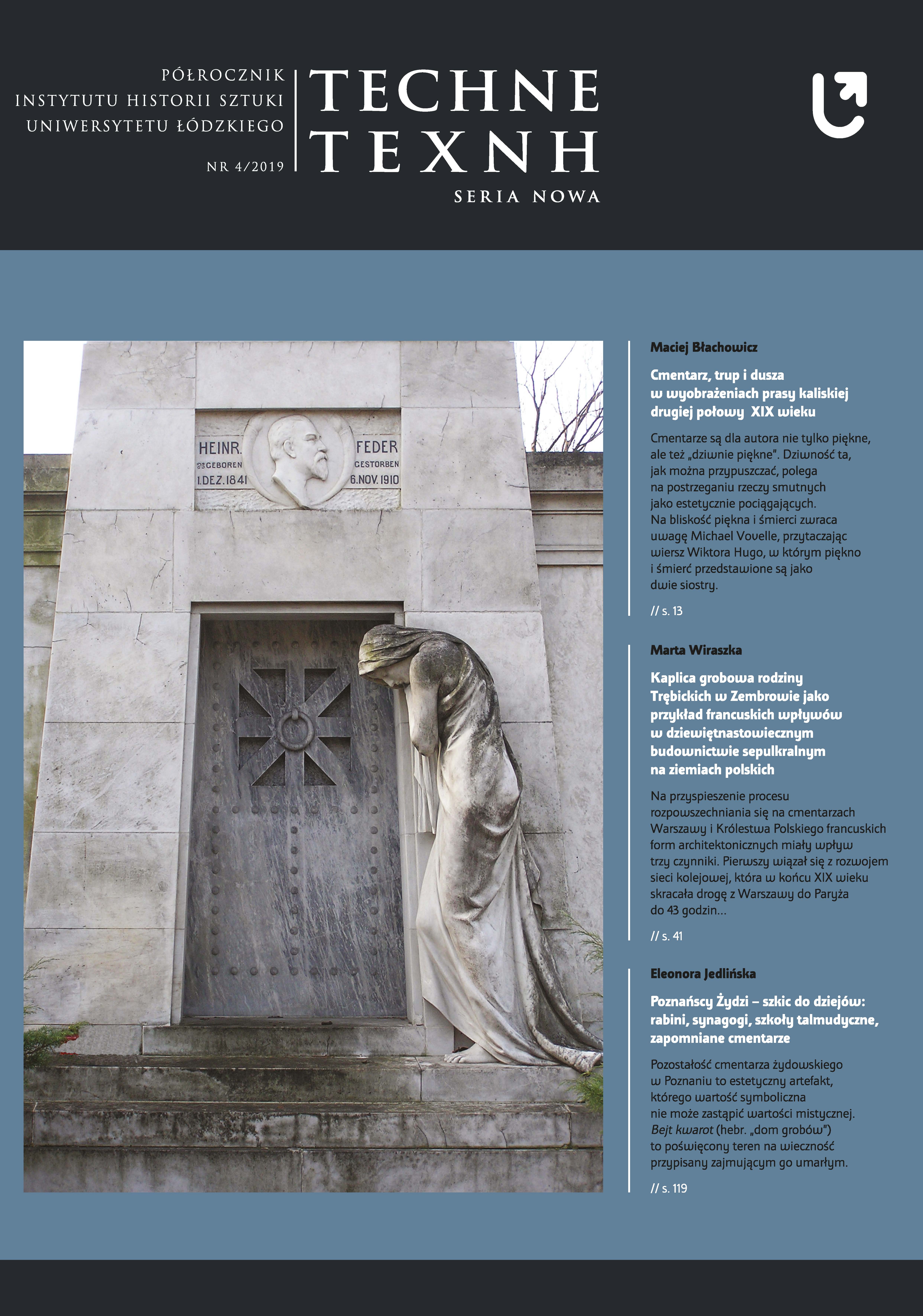Kaplica grobowa rodziny Trębickich w Zembrowie jako przykład francuskich wpływów w dziewiętnastowiecznym budownictwie sepulkralnym na ziemiach polskich
The tomb chapel of the Trębicki family in Zembrów as an example of French influences in the 19th century sepulchral construction in Poland
Author(s): Marta WiraszkaSubject(s): Fine Arts / Performing Arts, Architecture
Published by: Wydawnictwo Uniwersytetu Łódzkiego
Keywords: Zembrów; Trębicki chapel; Polish sepulcral architekture; French sepulcral architecture
Summary/Abstract: The chapel of the Trębicki family (Ślepowron coat of arms), was built in 1884 in the old church cemetery in Zembrów in Podlasie (Sokołów district). The building was erected by Stanisław and Emilia Trębicki, owners of the estate and the brick manor in Kurowice. The architect, unknown by name, gave the chapel made of cherry colored bricks and gray sandstone Romanesque-Gothic forms, which he borrowed from the French trade journal “Revue générale de l’architecture et des travaux publics”. The prototype were the plans for the burial building of the aristocratic Berghes family, which was designed and erected in the cemetery in Rânes (Normandy region, Orne department) in 1872–1873 by architect Victor Ruprich-Robert (1820–1887), published in its pages in 1876. The chapel in Zembrów is one of the many Polish tombs inspired by French implementations. The research conducted by the author so far has shown that statistically the largest number of such objects were created in Catholic cemeteries in Warsaw (33) and in the Kingdom of Poland (9).
Journal: TECHNE. Seria Nowa
- Issue Year: 2019
- Issue No: 4
- Page Range: 41-65
- Page Count: 25
- Language: Polish

